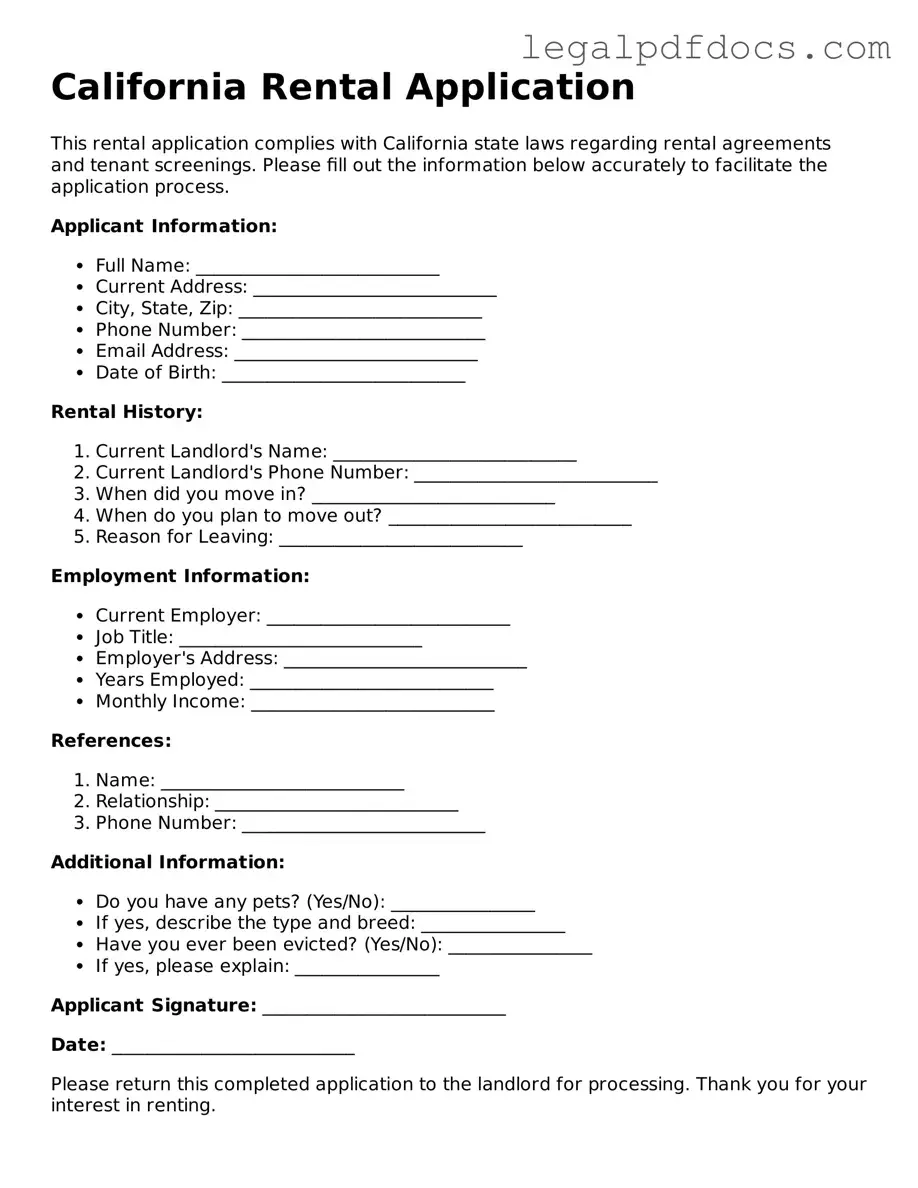When seeking a rental property in California, understanding the rental application form is essential for both prospective tenants and landlords. This form serves as a crucial tool in the tenant screening process, allowing landlords to collect vital information about potential renters. Key components of the California Rental Application include personal details such as the applicant’s full name, contact information, and social security number. It also requires employment history, income verification, and references, which help landlords assess the applicant's ability to meet financial obligations. Additionally, the form often includes questions regarding rental history, allowing landlords to gauge reliability based on past behavior. It's important for applicants to be aware that providing accurate information is not only a reflection of their integrity but also a factor that can significantly influence the outcome of their application. Moreover, the form may require consent for background and credit checks, ensuring that landlords make informed decisions while adhering to legal guidelines. Overall, the California Rental Application form is a foundational document that plays a pivotal role in the rental process, safeguarding the interests of both parties involved.
